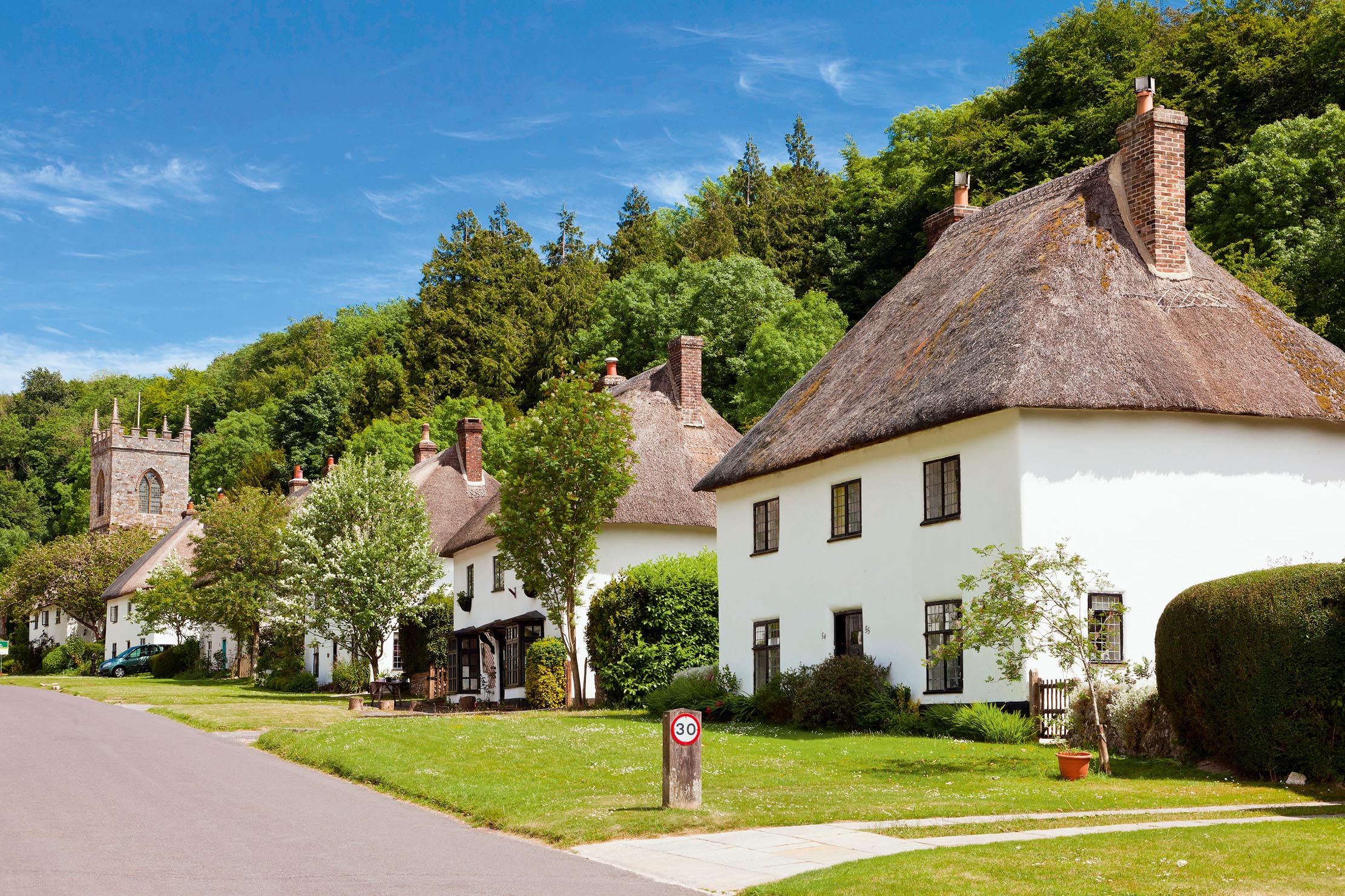A 'war on NIMBYs'? How the principle of 'how, not if' will underpin the new homes boom
The new government has pledged to 'turbocharge' the building of new homes and infrastructure. But you might only have a say in 'how, not if' they're built in your neighbourhood. Here's what it could mean for you.


Amid great pomp and ceremony, Sir Keir Starmer set out his stall in the King’s Speech this week.
Setting the scene, the new Prime Minister spoke about how it’s ‘time to take the brakes off Britain’ and ‘lay the foundations of real change that this country is crying out for’.
Phew, exhilarating stuff.
For those of you who haven’t been keeping a close eye on proceedings, one of the Prime Minister’s key pledges is to build 1.5 million homes over the next five years. And to achieve it, he’s got his eye on a major shake-up of the planning system.
One of the proposals is tucked away in a press release from the Prime Minister's office this week: ‘By enabling democratic engagement with how, not if, homes and infrastructure are built – the major brakes on the planning system will be addressed to support sustainable growth.’
Three important words there: ‘how, not if’. It appears that people might not be able to stop new development in their neighbourhood.
Recent YouGov data suggests that the majority of the public support a large increase in housebuilding in Britain. But unsurprisingly, it's a slightly different story when it comes to the prospect of a large amount of new homes in their local area. Support falls and opposition climbs.
Sign up for the Country Life Newsletter
Exquisite houses, the beauty of Nature, and how to get the most from your life, straight to your inbox.
"It isn’t so much NIMBYs who are currently blocking houses getting built as environmental legislation"
Add into the mix, amongst other things, Labour’s ambitions to build on the green belt or, as it’s manifesto puts it, ‘take a more strategic approach to greenbelt land designation and release to build more homes in the right places’, I’d hazard a guess it could be a bumpy road ahead.
We give a taste of things to come — potentially — in this week’s print issue of Country Life: ‘New MPs may find loyalties tested, torn between constituency pleas and Government policy. Seasoned objectors may need to choose their battles, deciding what they can live with and what they cannot—heads versus hearts.’
‘It’s been described by some commentators as a "War on NIMBYs" and it’s not hard to see why,’ says David Hannah, Group Chairman of Cornerstone Tax. ‘The decision to cut red tape and remove blockages to planning make for good soundbites, but we have little clarity as to what this means in practice. Will Labour ignore the concerns of local residents in favour of the ‘greater good’? It remains to be seen.’
But is giving communities a voice on how, not if, homes are built missing the point?
Ross Clark, writing for The Spectator, says that it 'rather ignores the reality: that it isn’t so much NIMBYs who are currently blocking houses getting built as environmental legislation'. It's a good point, albeit made somewhat disingenuously since it's pretty clear that there's a little of both at work.
Clark goes on to add: ‘Labour can’t have it both ways. It can’t claim to be boosting local democracy while at the same time taking away the – very limited – powers which local people have to decide where homes should be built.’
'Developers cannot simply ramp up their output overnight. The new government must create new incentives'
Hannah suggests Labour might be missing a trick. He points out that the plans fail to mention one essential factor: developers.
‘Developers cannot simply ramp up their output overnight. The new government must create new incentives for the sector, and punitive housing targets are not the way to go,’ he explains.
‘Private developers ought to be offered a tax break for the vital services that they provide, encouraging new entrants to the market whilst also stimulating further economic growth.’
Hannah is not alone in highlighting the issue of incentives. Jamie Freeman, director at buying agency Haringtons UK, notes that ‘many developers already possess land but are not proceeding with construction, as the financial incentives to do so are currently insufficient’.
Still, Freeman has some calming words for those who are nervous about a large wave of new homes emerging on the doorstep of their countryside idyll.
‘Quintessential English villages in the countryside lack the infrastructure necessary to support large-scale developments, which means these reforms will predominantly focus on larger projects situated on the outskirts of towns,’ he says. 'Consequently, the idyllic charm of these countryside villages will be preserved.’

Stability, confidence — and lots of new homes: Property experts on what Labour's General Election win mean for the housing market
Britain woke up on Friday to change of government. Plenty of change is expected across the board, but what will

Oh, we do like to be beside the seaside: How coastal house prices have bucked the trend to keep on rising in 2024

Just a third of ‘empty nesters’ downsize after children leave home
Hoping to buy a home with more space to raise your young family? If so, don’t count on it. The
-
 'Monolithic, multi-layered and quite, quite magnificent. This was love at first bite': Tom Parker Bowles on his lifelong love affair with lasagne
'Monolithic, multi-layered and quite, quite magnificent. This was love at first bite': Tom Parker Bowles on his lifelong love affair with lasagneAn upwardly mobile spaghetti Bolognese, lasagne al forno, with oozing béchamel and layered meaty magnificence, is a bona fide comfort classic, declares Tom Parker Bowles.
By Tom Parker Bowles Published
-
 Country houses, cream teas and Baywatch: Country Life Quiz of the Day, April 24, 2025
Country houses, cream teas and Baywatch: Country Life Quiz of the Day, April 24, 2025Thursday's Quiz of the Day asks exactly how popular Baywatch became.
By Toby Keel Published
-
 A day walking up and down the UK's most expensive street
A day walking up and down the UK's most expensive streetWinnington Road in Hampstead has an average house price of £11.9 million. But what's it really like? Lotte Brundle went to find out.
By Lotte Brundle Last updated
-
 Damon Hill's former home in Marbella is the perfect place to slow down
Damon Hill's former home in Marbella is the perfect place to slow downThe glorious Andalusian-style villa is found within the Lomas de Marbella Club and just a short walk from the beach.
By James Fisher Published
-
 A 327-acre estate in the heart of 'England’s Côte d’Or', with a 26,000sq ft Georgian style home at its heart
A 327-acre estate in the heart of 'England’s Côte d’Or', with a 26,000sq ft Georgian style home at its heartStokes Hall in the Crouch Valley is an inspiring property looking for a new owner.
By Penny Churchill Published
-
 Schreiber House, 'the most significant London townhouse of the second half of the 20th century', is up for sale
Schreiber House, 'the most significant London townhouse of the second half of the 20th century', is up for saleThe five-bedroom Modernist masterpiece sits on the edge of Hampstead Heath.
By Lotte Brundle Published
-
 Is the 'race for space' officially over?
Is the 'race for space' officially over?During the lockdowns, many thought the countryside was the place to be. It seems many are now changing their minds.
By Annabel Dixon Last updated
-
 What's a 'wellness village' and will it tempt you back into the office?
What's a 'wellness village' and will it tempt you back into the office?The team behind London's first mixed-use ‘wellness village’ says it has the magic formula for tempting workers back into offices.
By Annunciata Elwes Published
-
 A mini estate in Kent that's so lovely it once featured in Simon Schama's 'History of Britain'
A mini estate in Kent that's so lovely it once featured in Simon Schama's 'History of Britain'The Paper Mill estate is a picture-postcard in the Garden of England.
By Penny Churchill Published
-
 Hidden excellence in a £7.5 million north London home
Hidden excellence in a £7.5 million north London homeBehind the traditional façades of Provost Road, you will find something very special.
By James Fisher Published
